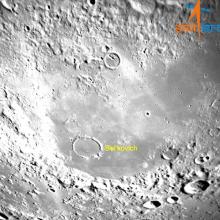Listen to today's episode of StarDate on the web the same day it airs in high-quality streaming audio without any extra ads or announcements. Choose a $8 one-month pass, or listen every day for a year for just $30.
You are here
Harvest Moon
The Harvest Moon lights up the sky tonight — the most popular full Moon of the year. In earlier eras, farmers used its light to harvest crops long into the night. And even today it doesn’t hurt.
There are several methods for figuring the date of the Harvest Moon. One says it’s the full Moon of September. And this year, the Moon was full on September 1st.
The most common rule, though, is that the Harvest Moon is the full Moon closest to the fall equinox. That took place on September 22nd. September’s full Moon came a full three weeks before that. By contrast, October’s full Moon is nine days after the equinox, so it wins the “Harvest Moon” honors.
One thing that makes the Harvest Moon so helpful is that, from high northern latitudes, it rises only a few minutes later each night. So for several nights in a row, the Moon is already up and shining by the time evening twilight fades away. That allowed farmers to keep right on working without a break.
The Harvest Moon won’t be the only full Moon this month. The average gap between full Moons is 29 and a half days. Since October has 31 days, that leaves enough time to squeeze in another one, on the 31st — a Blue Hunter’s Halloween Moon.
As you watch the Harvest Moon tonight, you’ll see a bright companion following it across the sky. That’s Mars, which rises to the lower left of the Moon. The planet looks like a brilliant orange star.
More about the Moon and Mars tomorrow.
Script by Damond Benningfield





